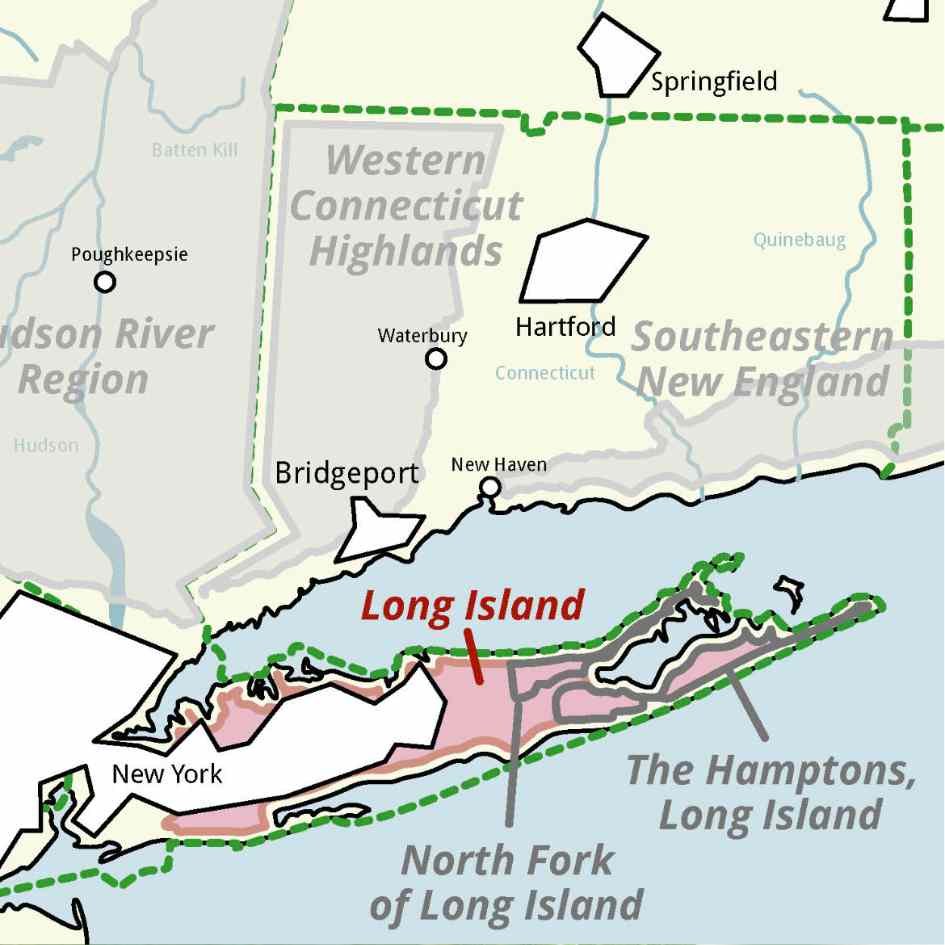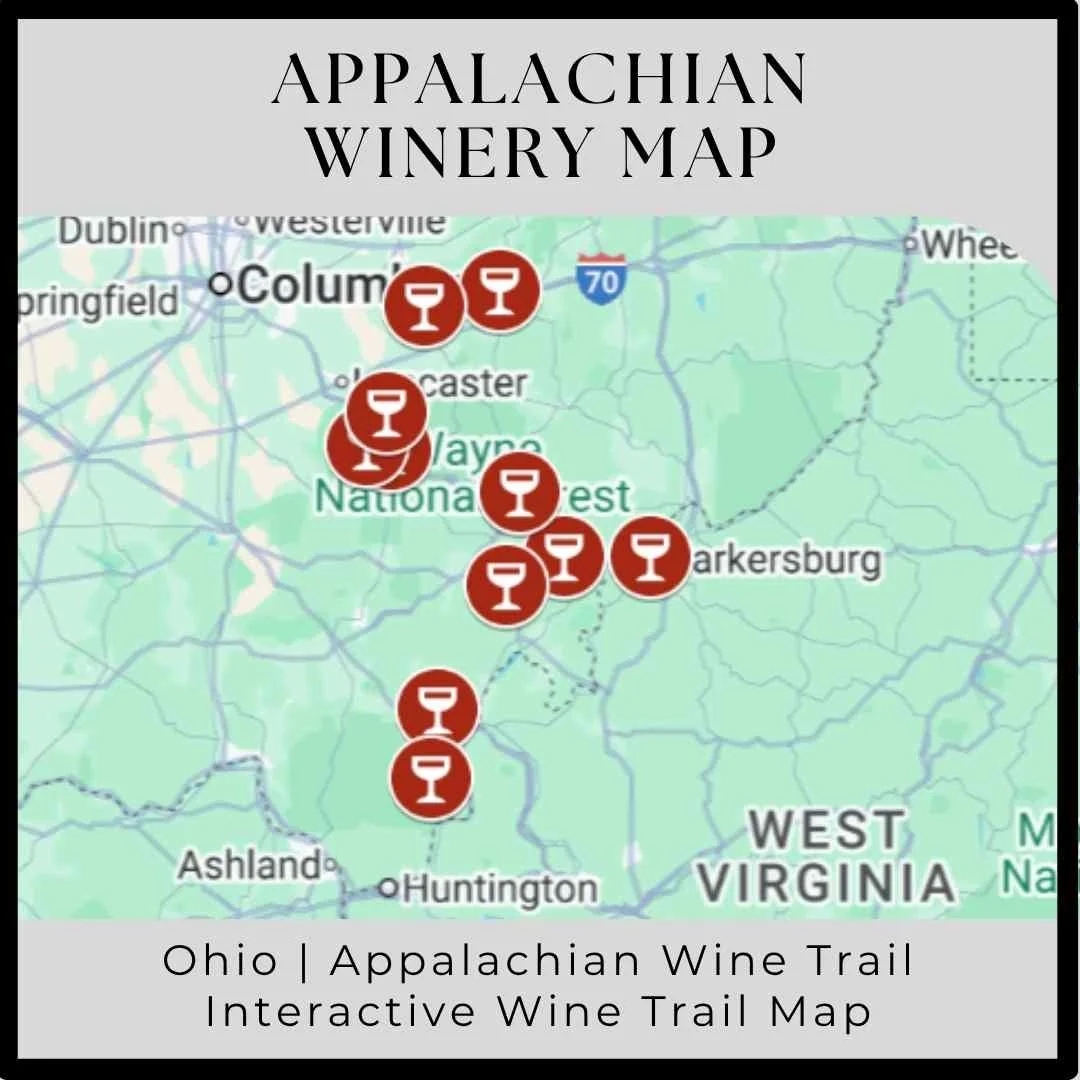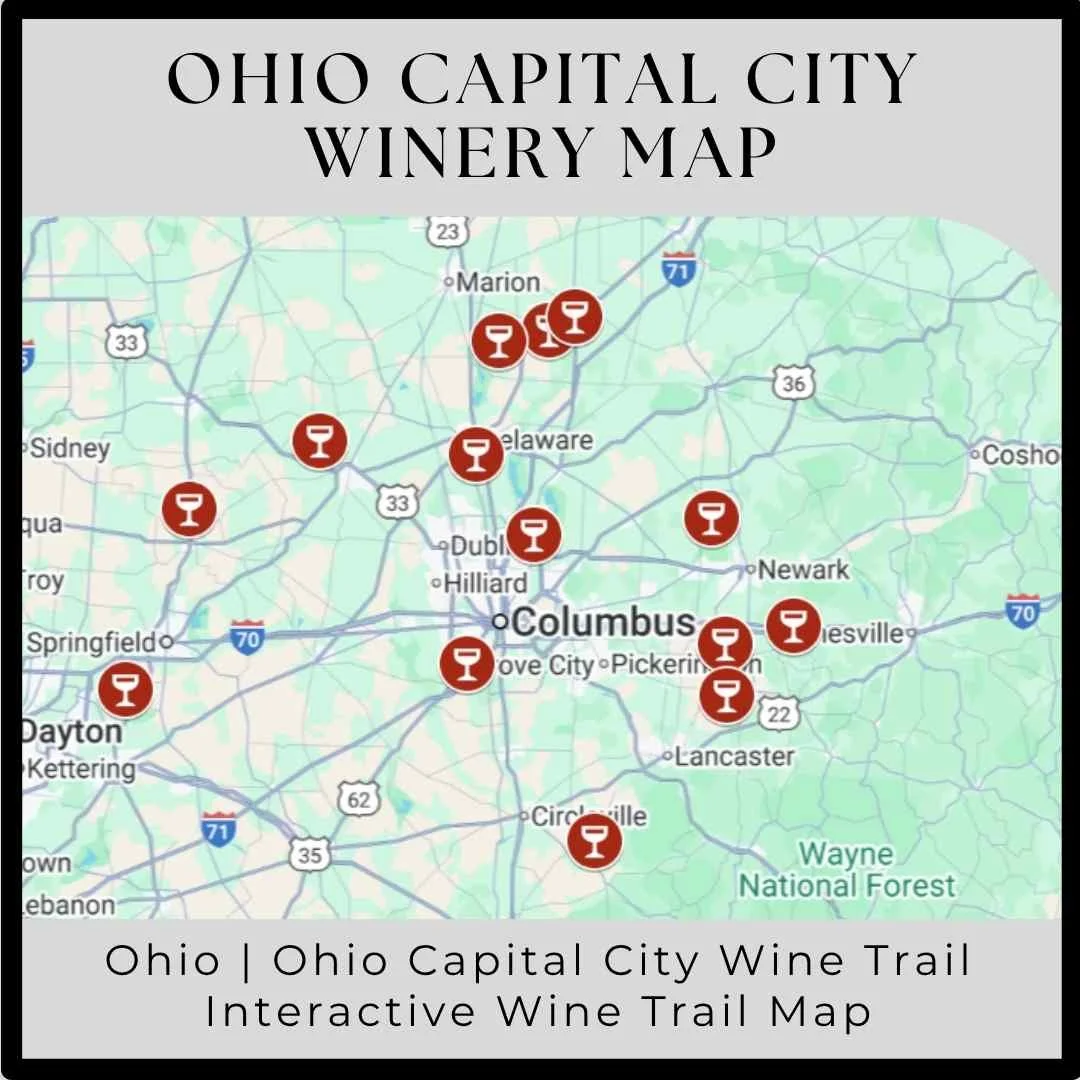Long Island American Viticultural Areas (AVAs)
Exploring the Long Island AVA, North Fork AVA and Hamptons AVAs
New York | Long Island | Wine Region Education

Long Island AVA Map
Long Island is home to three distinct American Viticultural Areas (AVAs), each contributing to the region's growing reputation as a top New York wine-producing area. Located just east of New York City, Long Island’s geography is defined by its position between Long Island Sound to the north and the Atlantic Ocean to the south. Stretching 120 miles, with a width of 23 miles, the island is surrounded by bodies of water, much like the Finger Lakes, that create a maritime climate with an extended growing season. The large bodies of water store heat, extending frost-free days and helping to moderate temperatures, making the region ideal for viticulture.
Long Island's wine country, particularly in Suffolk County, offers visitors from New York City a quick escape to a serene landscape of vineyards and fresh sea air. Access to the region is straightforward, whether by car, train, or air via NYC airports, making it an easy day trip or weekend destination for wine travelers. As a growing wine destination, Long Island challenges perceptions of what its wines can offer, with high-quality varieties produced on both the North and South Forks.
The North Fork, home to around 60 vineyards, with sandy soils with excellent drainage, while the Hamptons region features silty loam. Both sub-regions benefit from the moderating influences of the surrounding waters, which help prevent early frosts and allow grapes to ripen fully. This extended growing season, up to 225 days, supports the cultivation of premium vinifera grape varieties, including Chardonnay, Merlot, and Cabernet Franc.
However, Long Island’s maritime climate also presents challenges for grape growers. Humidity and proximity to the ocean can lead to issues with fungal diseases. Local wineries combat these problems through advanced viticultural practices, such as leaf removal for better air circulation and vertical shoot positioning (VSP) to maximize sun exposure. While organic and biodynamic farming can be difficult due to disease pressures, many vineyards are committed to sustainable practices that respect the land and its natural resources.
The region’s terroir was shaped thousands of years ago by glaciers, leaving behind well-drained soils ideal for growing grapes. The North Fork's rocky, sandy soils offer excellent drainage, preventing root rot in wet conditions, while the Hamptons AVA on the South Fork experiences slightly cooler and slower-ripening conditions due to its proximity to the Atlantic Ocean. These variations in climate and soil across Long Island’s AVAs give each region a distinct flavor profile: the North Fork is known for producing fuller-bodied wines, while the Hamptons AVA is celebrated for its elegant, nuanced wine varieties.
Let’s now dive into the history and defining characteristics of these AVAs.
1. The Long Island AVA – Established in 2001
The Long Island AVA was established in 2001 and covers the entire wine-producing region of Long Island, including both Nassau and Suffolk counties, along with the offshore islands. This AVA was created to include wineries outside of the more specific AVAs on the eastern end of Long Island, allowing for greater flexibility in blending wines across different areas of the island.
One of the key aspects of this AVA is that it requires at least 85% of the grapes used in wines labeled as "Long Island AVA" to come from within the designated AVA boundary. This rule helps maintain the integrity and authenticity of wines produced in the region. The entire Long Island wine region benefits from the moderating effects of the Atlantic Ocean, Long Island Sound, and Peconic Bay, which create a maritime climate ideal for grape growing.
2. The North Fork of Long Island AVA – Established in 1986
The North Fork of Long Island AVA was officially formed in 1986 and is one of the most prominent and productive wine regions in New York. Located entirely in Suffolk County, this AVA is bounded by the Peconic River and Peconic Bay, extending from Riverhead to Orient Point. The AVA covers a total of 65,000 acres (about 158 square miles), making it the heart of Long Island’s wine industry.
The North Fork AVA benefits greatly from its maritime climate, with water bodies on three sides, including the Long Island Sound and Peconic Bay. This creates cooler summers and milder winters, perfect for growing Bordeaux varieties like Merlot, Cabernet Franc, and Sauvignon Blanc. The North Fork also has well-draining sandy soils, which are ideal for viticulture, contributing to the production of some of the best Long Island wines.
3. The Hamptons, Long Island AVA – Established in 1985
The Hamptons, Long Island AVA is situated on the South Fork of Long Island, primarily within Southampton and East Hampton Townships in Suffolk County. Formed in 1985, this AVA also includes Gardiners Island and surrounding beaches and shorelines, with a total area of 209 square miles. While less densely planted than the North Fork, the Hamptons AVA still benefits from the cooling influences of the Atlantic Ocean, making it an ideal region for growing high-quality wine grapes.
The Hamptons AVA is particularly noted for its production of Bordeaux varieties such as Merlot and Cabernet Franc, as well as its growing interest in white varieties like Chardonnay and Sauvignon Blanc. This region’s wines are often described as elegant and balanced, with a unique maritime influence shaping the grapes’ development.
Other items that might interest you, click to learn more
A Snapshot of Long Island Wine Industry
Date Modern Wine Industry Founded on Long Island: 1973
First Commercial Vinifera Planted: Cabernet Sauvignon, Pinot Noir, and Sauvignon Blanc
Number of Vineyards Today: 60, ranging from 2.5 to over 500 acres with about 90 wineries
First Winery: Hargrave Winery, 1975
Annual Case Production: 500,000 cases (1,200,000 gallons)
Number of Acres Planted: 3,000
Source: Long Island Sustainable Winegrowing
Summary of Long Island’s AVA
Long Island AVA
Established: 2001
Location: Nassau & Suffolk Counties, offshore islands
Key Characteristics: Covers all Long Island vineyards, requires 85% of fruit to be sourced locally, benefits from maritime climate influences of the Atlantic and surrounding water.
North Fork of Long Island AVA
Established: 1986
Location: Suffolk County (Riverhead to Orient Point)
Key Characteristics: Known for its Bordeaux varieties, especially Merlot. Protected by surrounding water bodies, creating ideal growing conditions for wine grapes.
The Hamptons, Long Island AVA
Established: 1985
Location: Eastern Suffolk County (South Fork)
Key Characteristics: Smaller, more refined AVA with a focus on Bordeaux reds and white wines like Chardonnay and Sauvignon Blanc, with cooling effects from the Atlantic Ocean.
Conclusion
Long Island’s three AVAs—the overarching Long Island AVA, the prominent North Fork AVA, and the elegant Hamptons AVA—each offer unique growing conditions that produce distinct wine styles. From Merlot’s dominance on the North Fork to the refined elegance of wines from the Hamptons, the region continues to grow in reputation as a source of premium Long Island wines.
The next time you embark on a Long Island wine tour, take time to explore the diverse offerings from each AVA. Whether you follow the North Fork wine trail or sample Hamptons wine, you’ll discover the rich potential of Long Island’s vineyards.












































































